
Chicago is well known for its crime; no one has tried to argue that Chicago is a safe place to live. In fact, Chicago is one of NeighborhoodScouts’ top 100 most dangerous cities in the United States (and there are nearly 10,000 cities to choose from). However, not every part of Chicago is as dangerous as the numbers may claim. Some parts of Chicago are relatively safe, such as Printers Row.
However, some areas in Chicago are incredibly dangerous. The most dangerous neighborhood in Chicago has a violent crime rate that is 943 percent higher than the national average, making it a severely dangerous neighborhood to live in. That being said, how can a person stay safe while living in one of the most dangerous neighborhoods in Chicago? And what are the most dangerous neighborhoods in Chicago?
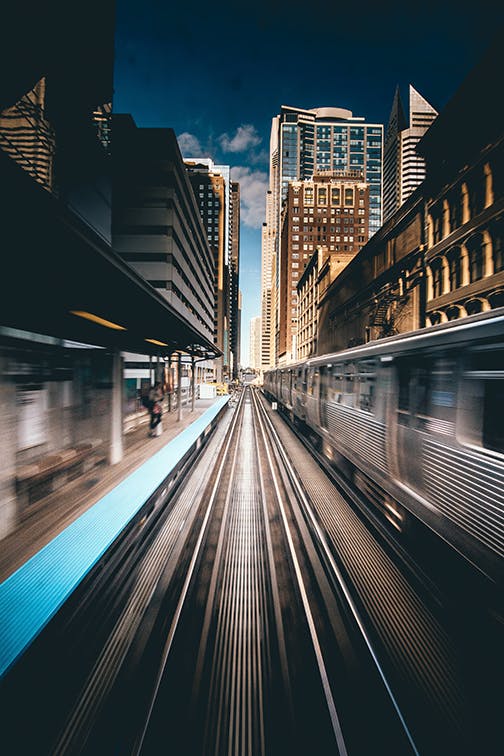
Is Chicago Dangerous?
First of all, is Chicago dangerous? Yes, Chicago is undeniably dangerous. Even the safest parts of Chicago still have more crime than the average city. If you’re caught in the wrong neighborhood at the wrong time, you’re likely to experience violent crime or property crime.
To determine whether Chicago is a safe city, we’ve gathered information from the FBI Crime Reporting Statistics, NeighborhoodScout, and AreaVibes. According to Chicago’s crime statistics, Chicago has an average crime rate that is 62 percent higher than the national average. When we divide Chicago’s crime rate into the two main crime categories—violent crime and property crime—we learn that the violent crime rate is 164 higher than the national average, and the property crime rate is 45 percent higher than the national average.
The national crime rate acts as a baseline for comparing crime. When a city or state has a crime rate that is higher than the national average, the city is considered to be more dangerous than average. If the crime rate is lower than the national average, the city or state is considered safer than average. The national average violent crime rate is 382.9 violent crimes per 100,000 people. Violent crime, according to the National Bureau of Justice Statistics, includes murder, shootings, rape, robbery, and assault. The violent crime rate can be broken down to show the crime rates for murder, rape, robbery, and assault:
- National Murder Rate: 5 murders per 100,000
- National Rape Rate: 43 rapes per 100,000
- National Robbery Rate: 86 robberies per 100,000
- National Assault Rate: 247 assaults per 100,000
The national average property crime rate is 2,362.2 property crimes per 100,000 people. Property crime includes burglary, arson, theft, and motor vehicle theft. The property crime rate can also be broken down to show specific crime rates of specific crimes. The property crime rates for burglary, theft, and car theft are:
- National Burglary Rate: 375 burglaries per 100,000
- National Theft Rate: 1,595 thefts per 100,000
- National Assault Rate: 229 assaults per 100,000

Chicago’s crime rates for the same crimes are significantly higher. The Chicago violent crime rate is 1,012 violent crimes per 100,000 people. There is a 1 in 99 chance that a resident of Chicago will become a victim of violent crime. The violent crime rates in Chicago for murder, rape, robbery, and assault are:
- Chicago Murder Rate: 21 murders per 100,000
- Chicago Rape Rate: 67 rapes per 100,000
- Chicago Robbery Rate: 259 robberies per 100,000
- Chicago Assault Rate: 566 assaults per 100,000
Chicago’s murder rate is four times higher than the national average. Rape, robbery, and assault are all more common than average, ensuring that Chicago is seen as a dangerous city.
The property crime rate in Chicago is 3,248 property crimes per 100,000 people. There is a 1 in 31 chance that a resident of Chicago will become a victim of property crime. The property crimes rates in Chicago are:
- Chicago Burglary Rate: 450 burglaries per 100,000
- Chicago Theft Rate: 2,424 thefts per 100,000
- Chicago Assault Rate: 375 assaults per 100,000
Essentially, if you’re planning to move to the city of Chicago, it might be a better idea to pick a safe suburb of the popular city instead. For example, one of the safest suburbs of Chicago is a sweet town called Hoffman Estates. However, if you’re set on moving to Chicago, at least steer clear of Chicago’s most violent neighborhoods.
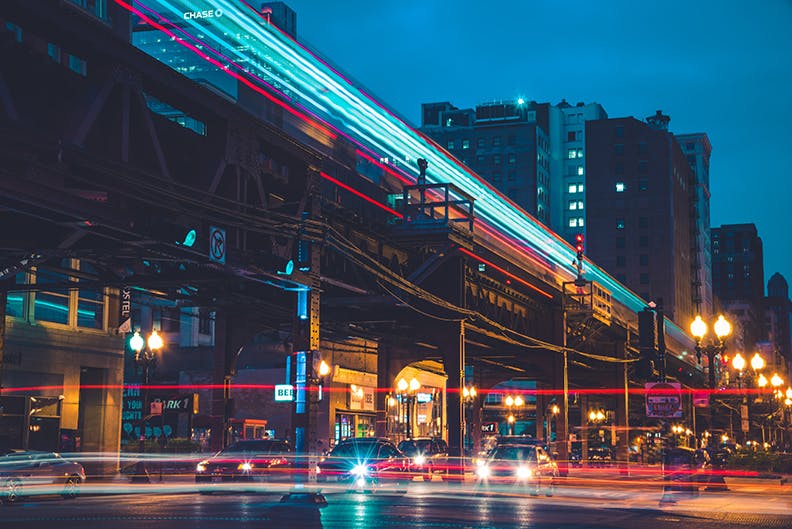
Most Dangerous Parts of Chicago
Chicago is more dangerous than the national average. However, it’s not unusual for the crime rates in some of the largest cities to be unusual high. The most dangerous neighborhoods of Chicago are:
1. West Garfield Park
West Garfield Park is the most dangerous neighborhood in Chicago. The total crime rate in this area is 13,135 crimes per 100,000 people, making it one of the most crime dense populations in the nation. The crime in West Garfield Park is 409 percent higher than the national average. Residents in this neighborhood have a 1 in 8 chance of becoming a victim of crime.
The violent crime rate in this area makes this one of the worst neighborhoods in Chicago. The violent crime rate is 3,596 violent crimes per 100,000 people. The violent crime rate in West Garfield Park is 943 percent higher than the national average, making it a 1 in 27 chance that you will become a victim of violent crime in this neighborhood.
The property crime rate in West Garfield Park is 9,539 property crimes per 100,000 people, ensuring that residents have a 1 in 10 chance of becoming victims of property crime. The property crime rate in West Garfield Park is 433 percent higher than the national average.
The Chicago Police Department recommends that residents do their best to report suspicious activity the moment they see it. If you see suspicious activity while in West Garfield Park, remove yourself from the situation and call for immediate help.
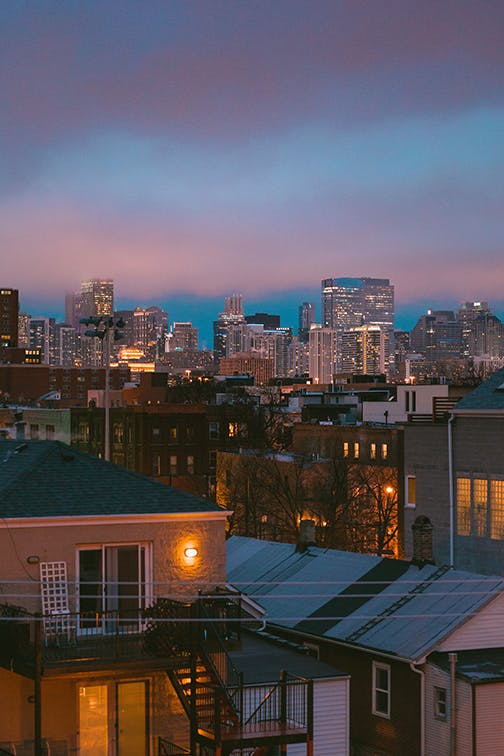
2. Washington Park
Washington Park is the second most dangerous neighborhood in Chicago. Washington Park has a population of 11,871 people and a crime rate of 9,904 crimes per 100,000 people. While living in Washington Park, there is a 1 in 9 chance of becoming a victim of either violent crime or property crime.
The violent crime rate in Washington Park is 3,290 violent crimes per 100,000 people, which is 859 percent higher than the national average. There is a 1 in 30 chance that residents living in Washington Park will become victims of violent crime.
The property crime rate in Washington Park is 300 percent higher than the national average. The property crime rate is 6,614 property crimes per 100,000 people. There is a 1 in 15 chance that residents of Washington Park will become victims of property crime. Law enforcement in Washington Park recommend that homeowners lock their doors and bar their windows to better ensure their safety.
3. East Garfield Park
East Garfield Park is the third most dangerous neighborhood in Chicago. This neighborhood has a population of 20,100 people and has the third-highest crime rate in the state of Illinois. The overall crime rate in East Garfield Park is 10,195 crimes per 100,000 people. There is a 1 in 10 chance that residents will become a victim of either violent crime or property crime while living in East Garfield Park.
The crime data reports a violent crime rate of 3,078 violent crimes per 100,000 people, which is 805 percent higher than the national average. There is a 1 in 33 chance that residents living in East Garfield Park will become victims of violent crime.
The property crime rate in East Garfield Park is 299 percent higher than the national average. The property crime rate is 7,117 property crimes per 100,000 people. There is a 1 in 14 chance that residents of East Garfield Park will become victims of property crime.
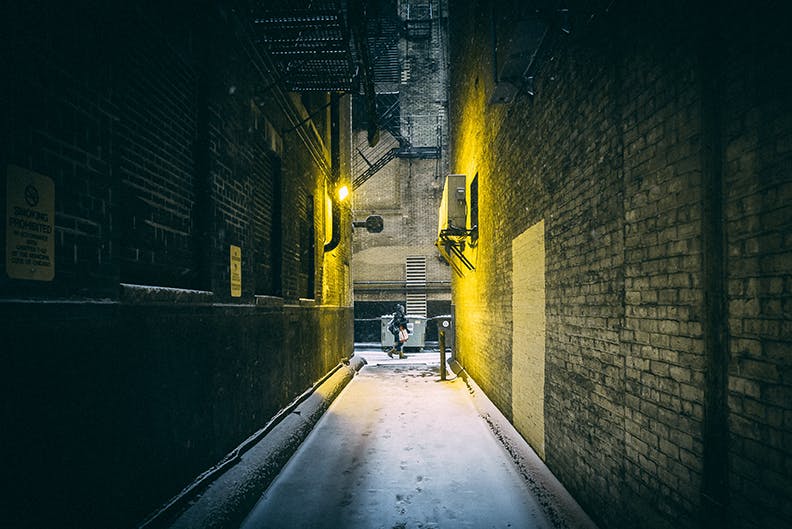
4. Englewood
Englewood has earned its title as the fourth most dangerous neighborhood in Chicago. With a population of 25,858 people, the area has a crime rate of 9,386 crimes per 100,000 people. While living in Englewood, there is a 1 in 11 chance that residents will become victims of crime (either property or violent crime).
The violent crime rate does little to redeem this neighborhood. The violent crime rate in Englewood is 3,026 violent crimes per 100,000 people. The violent crime rate is 792 percent higher than the national average, giving residents a 1 in 33 chance of becoming a victim of murder, rape, robbery, or assault.
The property crime rate for burglary, theft, and car theft is 6,360 property crimes per 100,000 people. The property crime rate is 269 percent higher than the national average. Residents living in Englewood have a 1 in 15 chance of becoming a victim of property crime.
5. North Lawndale
North Lawndale is the fifth most dangerous area to live in Chicago. North Lawndale has a crime rate that is 198 percent higher than the Chicago average (which is already high). It has a crime rate of 10,606 crimes per 100,000 people. Residents have a 1 in 9 chance of becoming a victim of property crime or violent crime.
The violent crime rate in North Lawndale is 3,003 violent crimes per 100,000 people. There is a 1 in 34 chance of becoming a victim of violent crime while living in North Lawndale. Homeowners, residents, and visitors should stick to public areas and avoid traveling alone while in North Lawndale to decrease their chances of becoming a victim of violent crime.
The property crime rate in North Lawndale is 7,603 property crimes per 100,000 people, giving residents a 1 in 14 chance of being targeted for property crime. The property crime rate in North Lawndale is 322 percent higher than the national average property crime rate.

6. Grand Crossing
Grand Crossing is the sixth most dangerous neighborhood in Chicago. It has a population of 32,317 people and has one of the highest crime rates in Illinois. The overall crime rating in Grand Crossing is 8,724 crimes per 100,000 people. The crime rate in Grand Crossing is 317 percent higher than the national average overall crime rate.
The violent crime rate in Grand Crossing is 2,858 violent crimes per 100,000 people. The main form of violence that is reported in Grand Crossing is gun violence and shootings. Many residents reported hearing gunshots late into the night. Due to the high violence in Grand Crossing, police patrol the area often. The number of homicides in this area makes it one of the most dangerous places to live.
The property crime rate in Grand Crossing is 5,866 property crimes per 100,000 people. This means that residents of Grand Crossing have a 1 in 18 chance of being targeted for property crime.
7. West Englewood
West Englewood, the seventh most dangerous place in Chicago, has a population of 32,317 people. The neighborhood has an overall crime rate of 9,551 crimes per 100,000 people, which is double the Chicago average, and triple the national average.
The violent crime rate in West Englewood is 2,773 violent crimes per 100,000 people. The chances of becoming a victim of violent crime in West Englewood is 1 in 37. The violent crime rate in West Englewood is 725 percent higher than the national average.
The property crime rate in West Englewood is 6,778 property crimes per 100,000 people. This means that residents of West Englewood have a 1 in 15 chance of becoming a target of property crime. One of the most common property crimes in West Englewood is burglary. Police recommend residents to stay clear of unlit streets at night and to travel in a group.
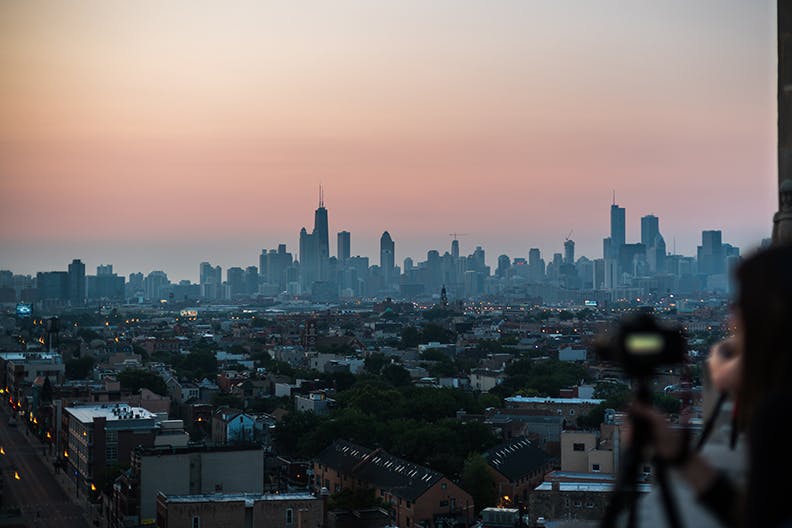
8. Riverdale
Riverdale is the eighth most dangerous neighborhood in Chicago. There are 7,357 crimes per 100,000 people every year. It’s incredibly likely that residents of Riverdale will experience either property crime or violent crime.
The violent crime rate in Riverdale is 2,614 violent crimes per 100,000 people. The violent crime rate is 382 percent higher than the national average. There is a 1 in 39 chance that residents will become victims of violent crime.
The property crime rate in Riverdale is 4,743 property crimes per 100,000 people. There is a 1 in 22 chance that residents will become victims of property crime.
9. South Shore
South Shore has a population of 47,000 people. The crime rate in South Shore was 7,573 crimes per 100,000 people. There is a 1 in 13 chance that residents in South Shore will become victims of either property crime or violent crime. For every 100,000 people, there are 30 daily crimes that are committed.
The violent crime rate in South Shore is 2,454, which is 642 percent higher than the national average. There is a 1 in 41 chance that residents will become victims of violent crime.
The property crime rate in South Shore is 5,119 property crimes per 100,000 people. For residents of South Shore, there is a 1 in 20 chance that they will become victims of property crime.
10. Chatham
Chatham has a population of 30,760 people. The overall crime rate is 108 percent higher than the crime rate recorded in Chicago. The total crime rate is 7,642 crimes per 100,000 people. Residents of Chatham have a 1 in 13 chance of becoming a victim of crime.
The violent crime rate in Chatham is 2,096 violent crimes per 100,000 people, which is 548 percent higher than the national average. Residents in Chatham have a 1 in 47 chance of becoming a victim of violent crime.
The property crime rate in Chatham is also high, with 5,546 property crimes per 100,000 people committed every year. The most common crime in Chatham is theft. Police encourage residents of Chatham to carry theft-proof bags and to watch their belongings carefully while traveling through the neighborhoods.

How to Stay Safe in Chicago
Although Chicago isn’t necessarily a safe place to live, there are measures that residents can take to decrease the likelihood that they will experience crime while living in Chicago neighborhoods. Here are five ways to decrease your chances of experiencing crime while living in neighborhoods in Chicago.
Install a Home Security System
Home security systems are one of the best ways to protect your home from burglary and home invasion. Burglary is extremely common in Chicago, especially in the more dangerous neighborhoods. In dangerous neighborhoods, home security systems can be the difference between being a common target for burglary and one of the few homes that aren’t targeted.
According to studies, home security systems will deter 60 percent of burglars. If an alarm is triggered, 90 percent of burglars will choose to run rather than face the aftermaths of an alarm.
One of the best home security systems for Chicago homeowners and apartment owners is Cove Security. Cove Security offers DIY systems that can be installed inside the house in less than 10 minutes. The inexpensive systems also come with professional monitoring and remote monitoring to ensure that someone always has an eye on your home.
Leave a Light On
Some studies have shown that leaving a light on inside your home can prevent your home from becoming a target of burglary. Burglars typically target empty homes rather than homes that have a person inside. During the day, burglars look for homes with no cars in the driveway. At night, they look for homes with no lights on. Leaving a light on in the home can prevent burglars from targeting your home while you’re gone.
Travel in Groups
While living in a dangerous part of town, one of the best things you can do is to travel in a group. Groups are less likely to be targeted for thefts, robberies, and assaults. No matter where you’re headed, whether it’s the grocery store or to a bar, always travel with a friend or two.
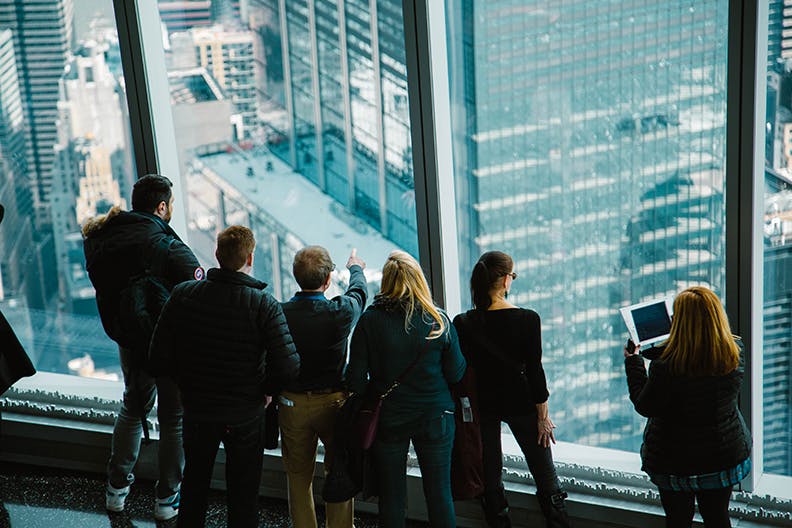
Carry a Personal Alarm and Pepper Spray
If you live in a dangerous area, carrying a personal alarm and pepper spray can help bring peace of mind. A personal alarm is a small device that can be attached to a key chain. The device, when pressed, emits a loud siren that can scare away an attacker and alert everyone nearby of the situation. Personal alarms are one of the best ways to protect yourself because the alarm is easy to carry and conceal. The alarm is loud enough to startle an attacker and allow the victim enough time to make an escape. There are also personal alarm apps that can be downloaded onto your phone for convenient security.
Pepper spray is also an important tool to carry with you. Pepper spray comes in a small cylinder device. On the top of the pepper spray, there is a button-switch. When pressed, a chemical is streamlined out, reaching up to eight feet. The spray is meant to strike the attacker in the eyes, causing temporary blindness, eye irritation, face swelling, and extreme pain. The effects from the pepper spray can last from 20 minutes to 90 minutes, ensuring the victim time to escape.
Don’t Look Like a Victim
While living in dangerous Chicago neighborhoods, ensure that you don’t look like a victim. Studies have shown that attackers look for prey, meaning those who are unable to protect themselves. Victims often walk distracted, looking at their phones, with their shoulders hunched. This posture signals to an attacker that the person isn’t confident in their surroundings, and, more importantly, that the person isn’t paying attention.
Rather than looking at your phone while walking through a dangerous area, put your phone in a secure pocket and make eye contact with the people around you. If you feel like someone is looking at you, level your gaze and look back. This signals to a potential attacker that you are confident in yourself. Of course, it also helps if you know basic self-defense.
Conclusion
Chicago is not a safe city. Residents in Chicago should install home security, stay with groups, carry personal alarms, and avoid unknown areas. While walking in Chicago, stay away from streets that you are unfamiliar with since it’s easy to wander into a high-crime zone. However, if you are aware of your surroundings and you take the time to protect your house, it’s fairly easy to stay safe while living in the city.
